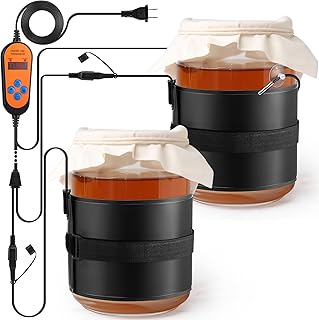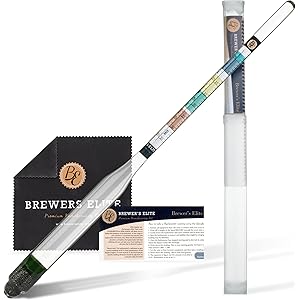Understanding Before Fermentation Gravity
Before fermentation gravity, often abbreviated as BFG, refers to the specific gravity measurement of a liquid before the fermentation process begins. This measurement is crucial for brewers and winemakers as it provides insight into the potential alcohol content of the final product. By measuring the density of the liquid, which is primarily composed of sugars, brewers can estimate how much sugar is available for fermentation, thus predicting the alcohol yield.
The Importance of Measuring Before Fermentation Gravity
Measuring before fermentation gravity is essential for several reasons. Firstly, it allows brewers to calculate the original gravity (OG) of their brew, which is a key indicator of the sugar content present before fermentation. This information is vital for determining the expected alcohol by volume (ABV) of the finished product. Additionally, understanding BFG helps in maintaining consistency across batches, ensuring that each brew meets the desired flavor profile and alcohol strength.
How to Measure Before Fermentation Gravity
To accurately measure before fermentation gravity, brewers typically use a hydrometer or a refractometer. A hydrometer is a simple device that floats in the liquid, providing a reading based on the liquid’s density. On the other hand, a refractometer measures the refraction of light through the liquid, allowing for quick and precise readings. Both tools require calibration and proper technique to ensure accurate results, which are critical for successful fermentation.
Factors Affecting Before Fermentation Gravity
Several factors can influence before fermentation gravity readings. The type of ingredients used, such as malt or sugar, directly impacts the sugar content and, consequently, the gravity measurement. Additionally, temperature plays a significant role; warmer liquids tend to have lower density, which can affect the hydrometer reading. It’s essential for brewers to control these variables to achieve accurate before fermentation gravity measurements.
Calculating Potential Alcohol Content
Once the before fermentation gravity is established, brewers can calculate the potential alcohol content of their brew. This is done using a simple formula that involves the original gravity and the final gravity readings taken after fermentation. The difference between these two measurements, when multiplied by a specific constant, provides an estimate of the alcohol by volume (ABV). This calculation is crucial for brewers aiming to create beverages with specific alcohol levels.
Get more content like this!
Sign up to receive updates and new terms first hand.
Common Mistakes in Measuring Before Fermentation Gravity
Many novice brewers make common mistakes when measuring before fermentation gravity. One frequent error is not taking the temperature of the liquid into account, as temperature variations can lead to inaccurate readings. Another mistake is failing to sanitize the hydrometer or refractometer, which can introduce contaminants that affect the fermentation process. Proper technique and attention to detail are essential for obtaining reliable BFG measurements.
Adjusting Before Fermentation Gravity
In some cases, brewers may need to adjust the before fermentation gravity to achieve their desired flavor and alcohol content. This can be done by adding additional sugars or diluting the mixture with water. However, any adjustments should be made cautiously, as they can significantly impact the fermentation process and the final product. Understanding the implications of these changes is vital for successful brewing.
Before Fermentation Gravity and Fermentation Health
The before fermentation gravity can also provide insights into the health of the fermentation process. A very high BFG may indicate an overly sugary environment, which can stress yeast and lead to fermentation issues. Conversely, a low BFG might suggest insufficient sugars for fermentation, resulting in a weak or incomplete fermentation. Monitoring BFG helps brewers maintain optimal conditions for yeast activity and overall fermentation health.
Before Fermentation Gravity in Different Brewing Styles
Different brewing styles may require varying before fermentation gravity measurements. For instance, high-alcohol beers, such as barleywines, typically start with a higher BFG compared to lighter styles like pilsners. Understanding the specific gravity requirements for each style helps brewers tailor their recipes and processes to achieve the desired characteristics and alcohol levels in their final products.
Conclusion on Before Fermentation Gravity
In summary, before fermentation gravity is a fundamental concept in brewing and winemaking that significantly impacts the final product. By accurately measuring and understanding BFG, brewers can make informed decisions throughout the brewing process, ensuring consistency, quality, and the desired alcohol content in their beverages. Mastery of this measurement is essential for both novice and experienced brewers alike.




